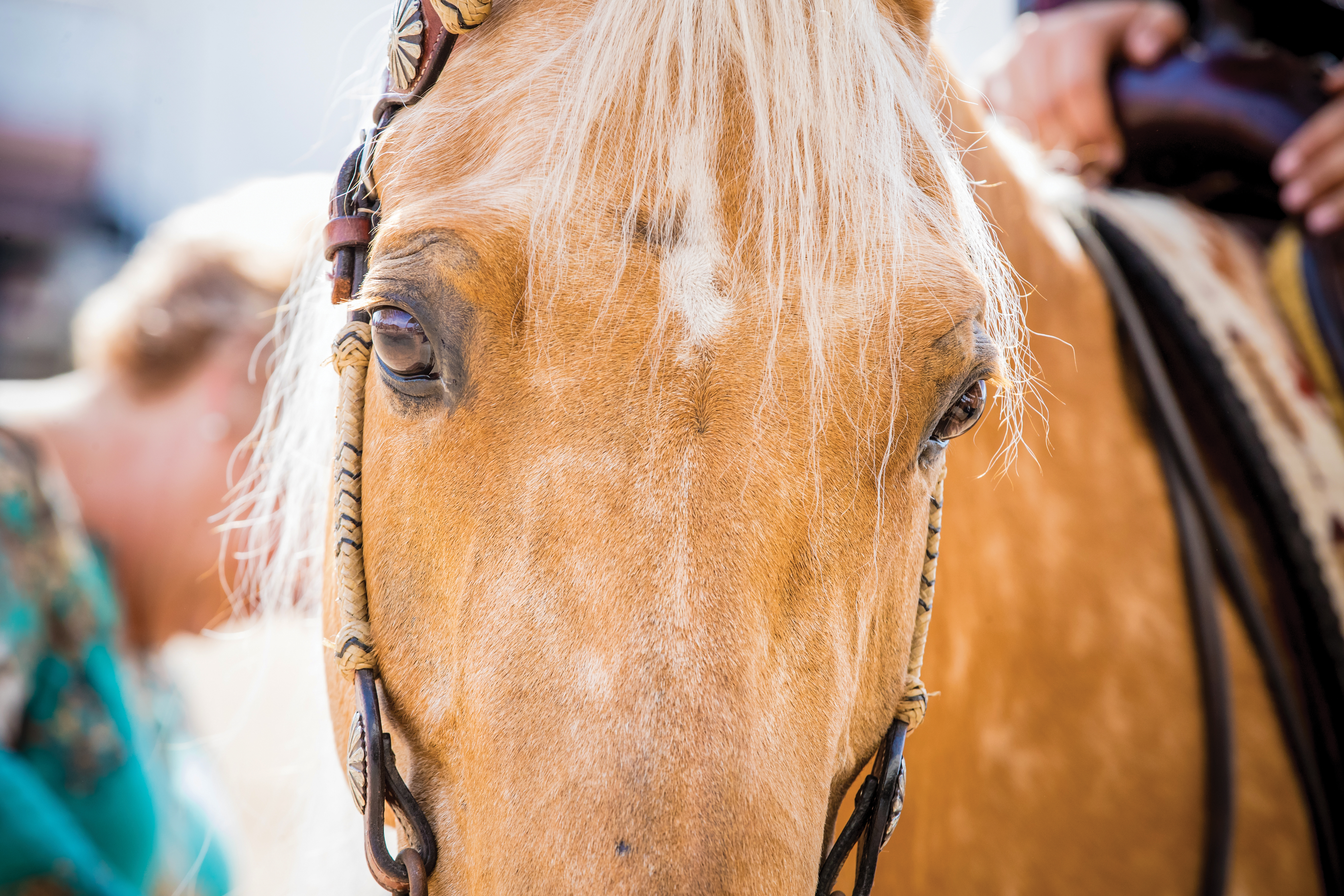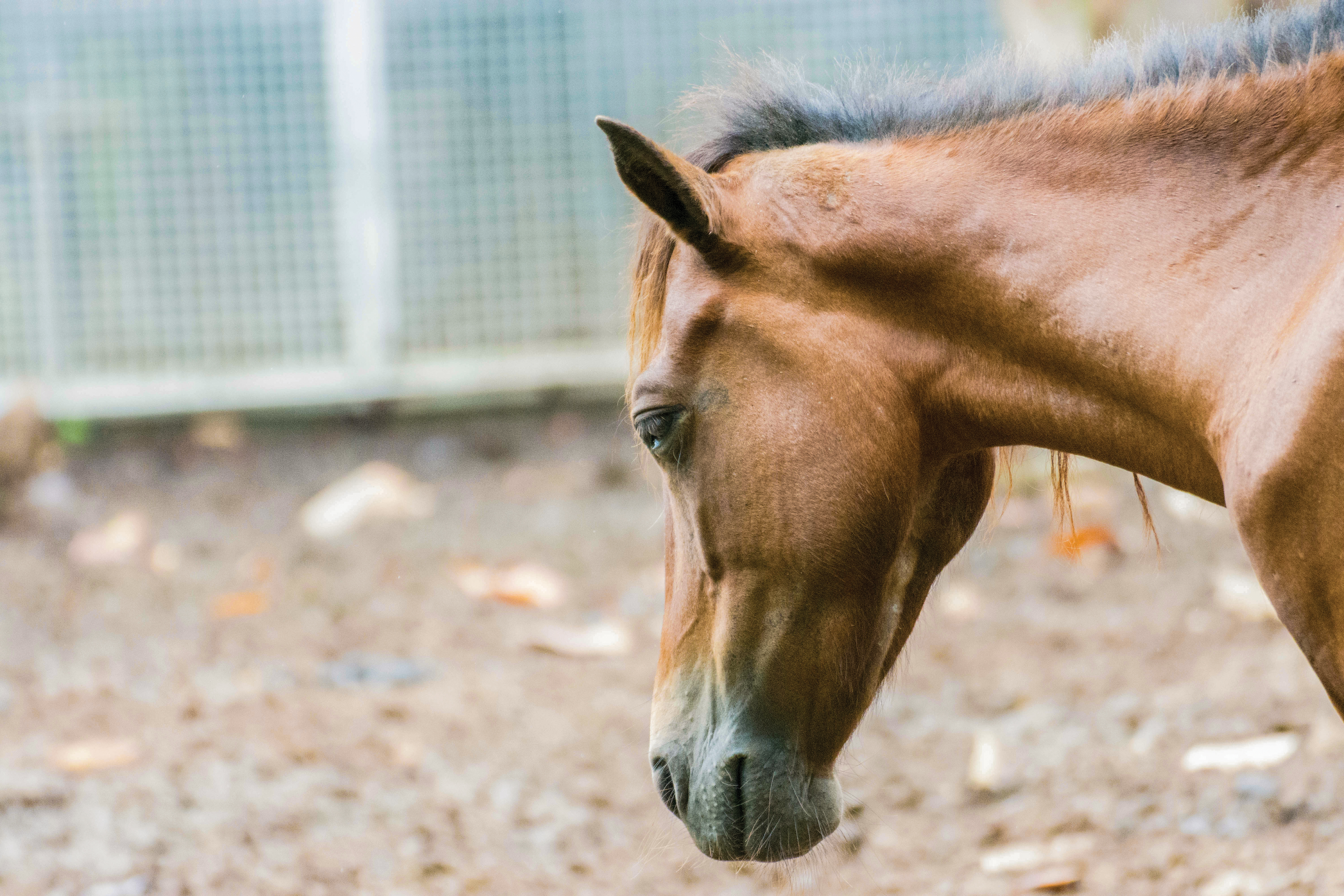Has your horse suddenly started exhibiting bad behavior during training? Or maybe he’s recovering from an injury and seems depressed. Could he be in pain? If only he could talk.
It turns out he can—we just need to learn how to listen. As a horseman, chances are you’ve spent a lifetime reacting to the position of your horse’s ears or the expression in his eyes. Recent research into equine facial expressions has taken that horseman’s instinct one step further with in-depth studies about precise movements of your horse’s face and what they mean.
In this article, you’ll learn about the Equine Facial Action Coding System (EquiFACS) and how your horse’s facial expression might be used to help determine what he’s feeling. You’ll also learn about other facial-expression research that’s helping to pinpoint whether a horse is feeling pain, and how you might use this information to evaluate your own horse.
Finally, we’ll take a look at what we still hope to learn about equine facial expressions, and what this might mean for horses everywhere.

Mallory Beinborn
The Science
Facial action coding (FAC) was first developed in humans in the 1970s. It involves analysis of the movement of every individual facial muscle, and the resulting slight change in facial appearance. Today, this tool is used for everything from facial recognition technology (it’s how your iPhone X figures out who you are), to analysis of mental illness and measurement of pain in patients unable to express themselves in other ways. In fact, facial-expression analysis is now considered the most reliable indication of pain in small children.
FAC has also been carried out with a number of nonhuman primates (chimpanzees and gibbon monkeys), dogs, cats, and now, horses.
To develop the FAC system in horses, researchers at the University of Sussex in the UK first performed a unique type of detailed dissection, called a “face mask.” In contrast to typical dissection techniques where the skin is first removed from the muscles, superficial muscles were removed with the skin to allow researchers to determine precisely how they were connected, and how these muscles would influence facial movements.
Once the anatomy was defined, researchers then analyzed 15 hours of video of 86 different horses to describe each individual facial movement, referred to as an “action unit.”
What did they learn? In a study published in 2015, the research team reported that horses have 17 specific facial movements (compared to 27 in humans). Of the non-human species researched, only cats have more than horses (cats have 21, perhaps because of the detailed whisker and eye movements of felines).
The EquiFACS system employed to document these movements has since been shown to be reliable and repeatable among trained observers—providing a solid tool for researchers to use in further studies about facial expressions and what they mean in horses.
A Focus on Pain
Other research on equine facial expressions has focused specifically on identifying pain. In 2014, a Danish research team published a study that investigated the existence of an “equine pain face” and described its characteristics (see “What ‘Pain Face’ Looks Like,” on page 56).
Earlier the same year, a different research team laid out the Horse Grimace Scale, a tool to methodically assess equine pain. To investigate this subject, they first looked at a group of horses undergoing castration—a common surgical procedure. During this work, they established six separate facial-action units observed when pain was known to be present. They even determined that the degree of pain could be estimated by grading the intensity of these facial actions. From this, they developed a scale for grading pain that has proved to be reliable on several subsequent studies, including one looking at horses with laminitis—a very painful condition.
Observing facial expressions offers a number of advantages over other methods for assessing pain in horses, such as gait evaluation and palpation. Facial-expression analysis is straightforward and quick to carry out, and because it focuses on a visual assessment of the horse’s face, it’s a safe technique even if a painful horse is difficult to handle. In its most detailed form, it allows handlers to grade degrees of pain from mild to severe, making it an ideal way to monitor whether a condition is progressing or responding to treatment.

istockphoto.com
Evaluating Your Horse’s Face
So, how can you use the observation of facial features to tell if your own horse is feeling pain? At the most basic level, here’s what to look for.
Facial Feature #1: Backward, asymmetrical ears. When your horse is painful, his ears will rotate backward. This can give the appearance that there’s increased distance between the base of his ears across his forehead. (Note: Fear can also result in backward ears, so this component of the equine pain face should be considered along with other factors.)
Facial Feature #2: Tightening of the eyes. If your horse’s upper eyelid is partially closed, he may be in pain. If it covers 50 percent of his eye or more, his pain may be severe.
Facial Feature #3: Tension above the eye. Muscles above the eye tighten, giving his upper eyelid an angled or V-shaped appearance. You might see his sclera (the “whites” of his eyes) exposed above the inner corner of his eye. This feature can also make the bones above his eye appear to be more prominent than normal.
Facial Feature #4: Prominent, strained chewing muscles. You’ll see increased tension above your horse’s mouth. If chewing muscles are obvious along the side of his head, this can be a sign of serious pain. (Note: As with backward ears, strained chewing muscles can also be a sign of fear so it’s important to consider other factors when evaluating this facial feature.)
Facial Feature #5: Mouth strained and chin pronounced. Your horse’s upper lip will be somewhat drawn back, giving the appearance that he has an obvious, more pointed chin.
Facial Feature #6: Strained nostrils. Your horse’s nostrils will be dilated on the sides, giving them a somewhat squarish appearance. His profile will appear to flatten.
Putting These Concepts to Work
With these descriptions in mind, what do you think? Is the expression on your horse’s face telling you he’s in pain? And if so, what should you do? Here are a few real-world scenarios detailing how this evaluation technique just might come in handy.
Scenario #1: Not Quite Right
You arrive at the barn for your evening ride and your horse just seems off. He isn’t interested in his dinner, plus doesn’t seem all that happy to see you even though you have his favorite apple-flavored treat. You take his temperature (it’s normal) and listen for gut sounds (you can hear them, but they’re not very loud). Granted, it was over 100 degrees outside today. Is your horse just hot and grumpy, or is something actually wrong with him?
What does his face say? He’s standing on the crossties with his ears pointed backward and his eyes half closed. You especially notice that his nostrils are flared, and his chin seems tight. Based on what you’ve learned about what these facial features “say,” you think he might be in pain.
What do you do? You call your vet, who’s concerned your horse might be exhibiting early signs of colic. You request a visit just to be safe.
The outcome. Sure enough, though your horse’s signs are subtle, when your vet performs a rectal palpation she discovers a large impaction (feed material blocking his intestine). She administers a laxative and some pain medication, and within 24 hours your horse starts passing large amounts of manure.
By paying attention to your horse’s face, you detected the problem early, before he started exhibiting the more obvious signs of colic pain, such as pawing and rolling. You may’ve saved your horse from experiencing a much more serious colic episode.
Scenario #2: Training Troubles
Your horse has been a willing, easy partner in his training—until recently. Just last week he started swishing his tail when you asked for the left lead and even let out a couple of big bucks. You’ve recently increased your training demands in preparation for a big show, but his reaction still seems uncharacteristic. He isn’t lame and doesn’t seem sore anywhere that you can detect.
What does his face say? Your horse has big, beautiful eyes and you’ve always loved his soft expression. Today, though, you notice when he’s standing in his stall that his upper eyelid looks tense and angled into a V shape. He also seems to be drawing his upper lip back and you can see all of the muscles along his cheek—almost as if he’s gritting his teeth. He’s definitely showing signs that he’s experiencing pain, according to facial-expression research.
What do you do? You call your vet, who performs a full soundness evaluation but can’t find anything obviously wrong. Your horse is moving well, has no sensitivity to palpation anywhere, and all of his flexion tests are normal. Still, because you’re so convinced he’s feeling pain, you decide to pursue a bone scan (nuclear scintigraphy), a diagnostic test that can pinpoint sources of active inflammation that could be causing subtle problems.
The outcome. Scintigraphy identifies a distinct “hot spot,” or source of inflammation at the attachment of one of the ligaments near your horse’s stifle joint. Your vet recommends treatment with a period of rehabilitation and believes your horse will fully recover if given time. If you’d continued working your horse, however, the story might be different. Your early detection of subtle signs of pain just might’ve prevented a minor injury from becoming a career-threatening one.
Scenario #3: Rehabilitation Woes
You’ve been rehabilitating your horse from a tendon injury and he was doing well—until he blew up during a hand-walking session yesterday. You don’t see any heat or swelling, but you were supposed to add trotting to his regimen tomorrow. Now you’re not sure if you should. You’re concerned he might have re-injured the ligament in question during the blow-up.
What does his face say? Your horse has been bright and happy for the past several weeks, but today you notice his ears are asymmetrical and his eyes are ever-so-slightly closed. Those are the only things you see and they’re very subtle—but with your newfound knowledge about facial expressions, you realize your horse might indeed be experiencing pain.
What do you do? You call your vet for advice. Given the blow up and the subtle signs of pain you describe, she suggests you delay starting trot work for another couple of weeks in case your horse has indeed stirred up that ligament injury.
The outcome. You heed your vet’s advice and hold off on introducing the trot to your horse’s rehabilitation schedule. Within a week, your horse is back to his perky, happy self. His ears are forward, his eyes wide open. You move forward with your rehabilitation plan and all goes well.
By using your horse’s facial expressions as a way to monitor his progress during rehabilitation, you’ve increased your chances for a successful outcome—and minimized the risk of a significant setback.
And in the Future…
Observing facial expressions is something you can easily put to use in your everyday life to assess whether your horse might be in pain. It can also help researchers address welfare concerns, trainers evaluate their training techniques, and veterinarians monitor treatment success or failure.
So what’s next when it comes to researching the meaning behind specific equine facial expressions? Only time will tell, but I’ll be looking forward to learning what specific facial actions correlate with positive emotions—like happiness and gratitude. Because, let’s face it: The expression on your horse’s face is his best way of telling you what he’s thinking. And if you can have a conversation with your horse, you’ll be much more likely to achieve your goals together, both in and out of the saddle.






